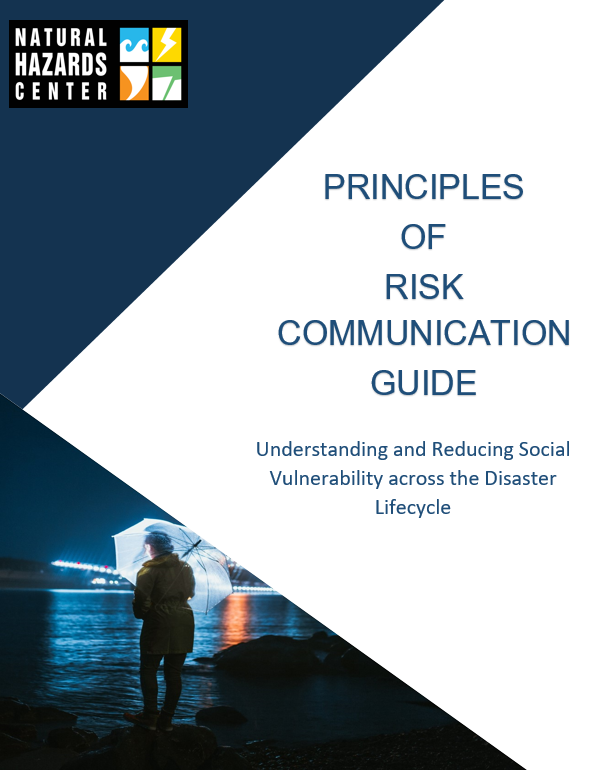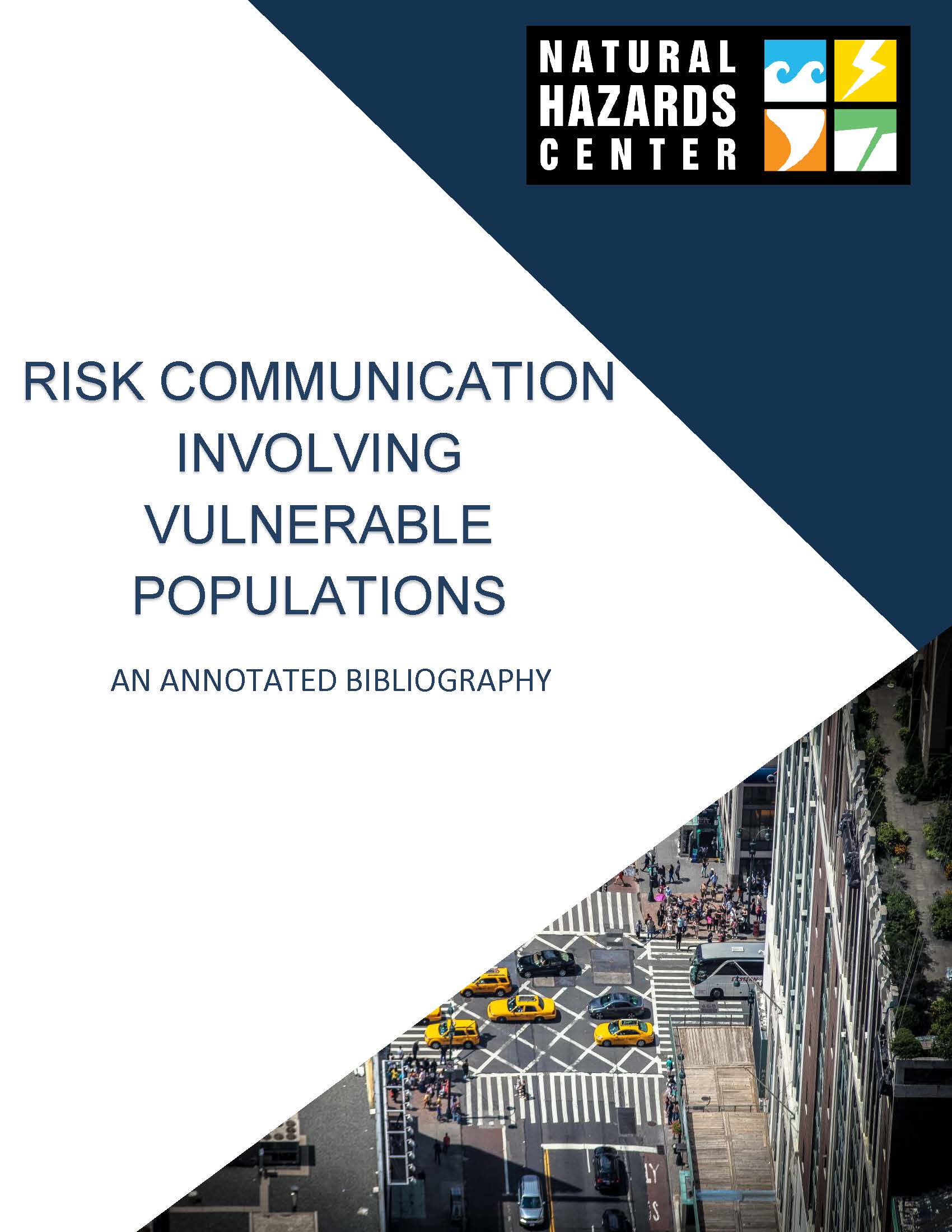New Principles of Risk Communication Guide Available for Hazards Practitioners
From the first signs of a tropical storm to the decision of how to build back stronger in the aftermath of a flood, effective and efficient communication from government agencies to the public is a vital component of successful emergency response measures. This task, however, is increasingly complex as populations grow and change alongside new technologies and methods of seeking information. How do emergency managers relay information in ways that prompt desired action? Which methods are needed to reach populations who are underserved or difficult to reach through traditional channels?
To help tackle these longstanding issues, the Natural Hazards Center, with support from the USACE National Flood Risk Management Program team, has prepared a risk communication guide and annotated bibliography for use by Silver Jackets teams and other federal and state flood risk management professionals. The documents were developed and organized to provide the user with a concise delivery of key concepts while providing opportunities for deeper exploration of topics.
The Principles of Risk Communication Guide: A Guide to Communication with Socially Vulnerable Populations Across the Disaster Lifecycle identifies three overarching principles based on a review of literature and relevant research: (1) communicate through familiar and trusted messengers; (2) provide clear, actionable information; (3) tailor messages and information pathways for target audiences. The organizational format allows the reader to easily navigate and comprehend the principles, with tables summarizing underlying concepts and examples of the principle’s application in real world situations for each phase of the disaster lifecycle. While the principles can be broadly applied to all populations, the guide highlights tips, implications and considerations for communication with socially vulnerable populations (defined as those who face a disproportionate disaster risk due to a variety of historical, social, economic and political considerations).
The Natural Hazards Center has also prepared a companion annotated bibliography for practitioners interested in delving more deeply into the supporting information behind these principles. Risk Communication Involving Vulnerable Populations: An Annotated Bibliography summarizes published academic research, public reports and guidance documents for more than 40 resources. A table at the front summarizes in one sentence the risk communication implications conveyed by the resource. Additional information for each resource includes key findings and take-home messages stated up-front and a brief abstract.
“This guide serves as an important first step in moving beyond simply sharing information about risk communication and toward translating existing knowledge into real-world changes in practice,” said Natural Hazards Center Research Associate Nnenia Campbell, who spearheaded the development of the guide. “Our approach to designing these products is a direct outcome of conversations with practitioners in which we asked what kinds of information formats would be most helpful to their work.”
The collaborative partnership between USACE and the Natural Hazards Center was established through an interagency agreement between USACE and the National Science Foundation as the granting agency for the Natural Hazards Center Clearinghouse. Under this agreement, the Natural Hazards Center is currently developing a practitioner’s worksheet to support application of the risk communication guide principles that is anticipated to be available in late 2021.
For questions or comments about these documents, please email IWR.SilverJackets@usace.army.mil. Additional information can be found on-line about the Natural Hazards Center development of these risk communications documents.
This is a slightly revised version of a story that was initially shared via the Silver Jackets Newsroom.

